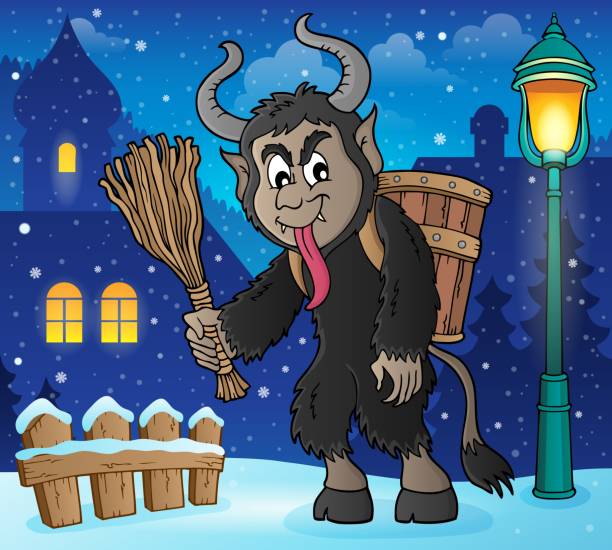By: Barnali Bose, Editor-ICN World
An Alpine Legendary Bad Santa that horrifies children and amuses grown-ups
KOLKATA : Worldwide, every year in December, children excitedly track the countdown to the visit of the traditional wish granter, Santa Claus,as he is popularly known. Our good old white- bearded St. Nicholas,the hero of children who traverses the four corners of the globe in a jiffy, riding his majestic reindeer-drawn sleigh is a delight for the young and old. But,in Austria, on Christmas, beware lest you meet Krampus, ‘the Christmas Devil’ who is an Anti-hero out to terrify one and all.
In Austria, have children been good, Santa Claus, will shower them with their desired gifts. Otherwise, they’ll have to face the music from who else, but Krampus, the legendary ‘bad’ Santa, as they call him. Well, that’s what elders tell pranksters to keep them from being naughty.
“Krampus”, the very name that sends shudders down the spine of children in Austria is half-man, half-goat. He comes just before Christmas, on the lookout for naughty children to dole out punishment to them. Not only that, as the legend goes, he might even drag them to hell, have they gone overboard in their naughtiness.
Krampus is a character, derived from folklore in Austria’s Alpine region, where he has been scaring children and amusing grown-ups since time unrecorded.
Krampus has its origin in pagan celebrations of the winter solstice. Later, it came to be a part of Christian traditions in which St. Nicholas visited children to reward them on Christmas Eve.Around that time,Krampus, St.Nicholas’ menacing partner would also visit truant children to teach them a lesson.
In Alpine Austria and some parts of Germany, this day was known as Krampusnacht, or “Krampus night,” when adults would dress up as Krampus to instill fun-filled fear in children in their homes.
One might have also seen Krampus running down the street during a Krampuslauf—literally, a Krampus run. If Krampusnacht was a way to scare kids into behaving themselves, the Krampuslauf, which wasn’t tied to a specific day, was a way for men to give vent to their negative emotions.
Austrian men would get drunk and run through the streets dressed as the fearsome creature. Like Krampusnacht, the Krampuslauf tradition continues to the present day.
The introduction of mass visual media couldn’t help but sweep the charismatic Krampus up in its wave. When the postcard industry experienced a boom in Germany and Austria in the 1890s, it paved the way for Krampuskarten.
Obviously,these holiday cards weren’t supposed to make one feel warm and cheerful. Ones marked “Gruss vom Krampus” (“Greetings from Krampus”) showed Krampus stuffing a distressed child into his satchel or preparing to hit one with his bundle of birch sticks.
Many of these postcards depicted Krampus chasing children with his sticks, leading them away in chains, or carrying them off in his bag.
In the 20th century,in some cards Krampus was portrayed as a large woman whipping frail men with her birch sticks or carrying them off in her satchel.
Another image was that of a smirking woman dangling a petrified Krampus in the air, holding his bundle of birch sticks behind her. This was perhaps a depiction of tables being turned, so far as gender equation was concerned.
Krampus, the bad Santa made his inroads into America over a century later. In 2004, when art director and graphic designer Monte Beauchamp popularised Krampus with his card exhibits.
Krampus has since become a kind of ironic icon in America. The graph of Krampus’ popularity shot vertically in the U.S. with the 2015 feature film,Krampus.
“ Who you will meet, St. Nicolas or Krampus, depends on how you have been,” parents tell their children in Austria, even today. Interesting, but nevertheless grotesque-isn’t it?




